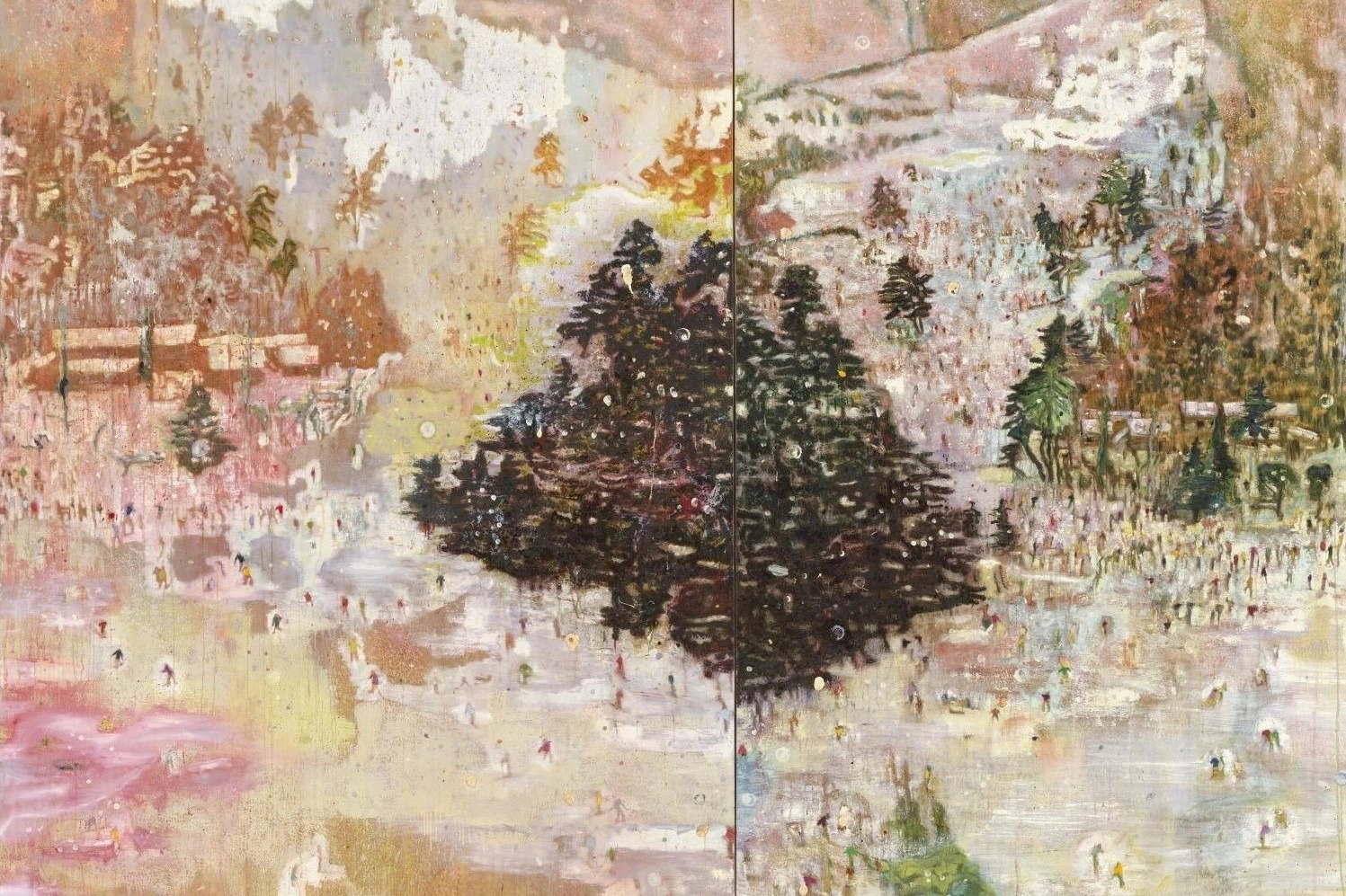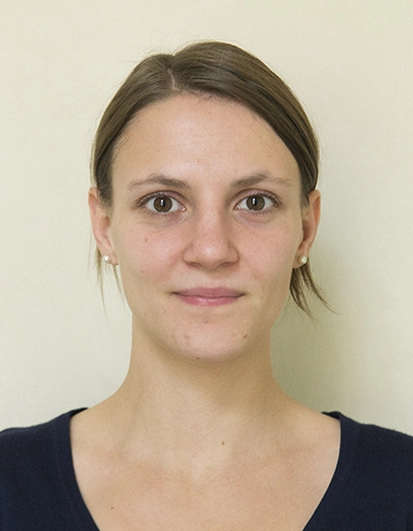Peter Doig, a celebrated contemporary artist, seamlessly blends a modern narrative into the rich tradition of landscape painting, echoing the styles of Ferdinand Hodler, Emil Nolde, and the Flemish Renaissance master Pieter Bruegel the Elder. Born in Scotland but shaped by his formative years in Canada, Doig's art reflects both his love for hockey and a fascination with skiing. Since the 1990s, he has been producing vibrant paintings that immerse individuals in the natural world. Doig's creative process involves transforming photographs and newspaper clippings into visual tales, each piece a fusion of personal memories and imaginative interpretation. Ski resorts, animated with jumping snowboarders, are enveloped in a luminous haze or swirling snowstorm in his expansive oil paintings. Instead of pinpointing specific locales, his large-scale canvases encapsulate the spirit of the landscape, conveying a tapestry of experiences and impressions. While Doig's paintings embrace classical elements, they are firmly anchored in the contemporary, offering a fresh perspective on the enduring connection between humanity and nature.

Just a few days left until the new year, marking the 250th anniversary of the birth of the German Romantic landscape artist Caspar David Friedrich. Exhibitions in Hamburg, Berlin, and Dresden are set to celebrate his legacy. Friedrich's contemplative landscapes, transcending beyond us, continue to captivate visitors even today. Perhaps that's why the works of Peter Doig are also beloved, as they explore the relationship between humans and nature. On his canvases, Doig portrays 'enchanted magical mountains surrounding a person who, despite the desire to claim them, remains subordinate to nature.

In the '90s, as Peter Doig embarked on his journey into crafting these enchanting, almost mystical landscapes, he boldly diverged from the artistic currents of the time. Back then, traditional painting seemed like a relic, overshadowed by the surge of conceptual art. Yet, Doig's creations stood out, radiating a distinctive timeless vibe, consciously steering clear of mere aesthetic allure.
What set him apart even more was his approach to references—eschewing reality, he delved into his memories and drew inspiration from photos or postcards. This unconventional method bestowed his paintings with a certain vintage quality, akin to weathered photographs, often evoking a sense of melancholy. As Christie's aptly puts it, 'His works carry a nostalgia that feels unrooted, as if the viewer were flipping through a stranger's family photo album.'

Peter Doig delved into winter sports as early as the '90s, primarily drawing inspiration from the Canadian mountains where he spent his formative years. 'The years spent in Quebec during my childhood, the Expos era, the beginning of my adolescence, and later, in my twenties in Montreal, were crucial for the development of my painting,' reflects the artist.
In his 1994 work 'Ski Jacket,' Doig employed a distinctive diptych format, inspired by a newspaper photograph of Japanese mountains. The piece comprises two differently wide canvases depicting a slope filled with colorful skiers and a cluster of evergreen trees in the middle, precisely at the juncture point. The motif of reflection, later expanded to include reflections on water surfaces in his other works, is characteristic of the artist's paintings. In this diptych, Doig attempted to capture the sense of uncertainty experienced by novice skiers.
'If you look carefully you can see that they are all groping to stay on their feet, they are in very awkward positions, and whilst there are other things going on in that painting, that sense of awkwardness was one of the things that attracted me to that image,' explains the artist. He adds, 'And I think painting is a bit like that, it takes time to actually take control of the ‘greasy’ stuff – paint.'
The color explosion in Peter Doig's artworks is simply mind-blowing. Imagine layering see-through pigments and free-flowing drips, giving you this cool, dreamy vibe. And when it comes to his snowy masterpieces, he goes for these soft, dazzling pinks and yellows that perfectly catch the sparkle of sunlight on fresh powder. You're looking at your typical winter scene, but the colors throw in this weirdly magical twist, making it feel like you're peeping through ski goggles.
'There used to be these rose-tinted goggles that made everything look as pink as cotton candy.' reflects the artist, evoking a sense of nostalgia for an era gone by.
Another of Doig's diptychs is a five-meter painting from the '90s titled 'Pink Mountain,' where a jumping snowboarder literally disappears into the surrounding space framed by snow-covered mountains. 'There is an otherworldliness in the silence of this image: the contrast between this stillness-- which is emphasised by the stillness of the mountains -- and the movement of the winter sportsman as he sails through the air creates a mysterious tension..'
The perspective from which we observe the airborne snowboarder, almost from above, adds an intriguing touch. The artist employs his characteristic flattened composition, making the space somewhat ambiguous. The viewer is presented with a glimpse of only the underside of the snowboard, causing the figure to seamlessly merge with the background. 'The surface the board has left is not visible. Instead, the snowboarder hangs against a backdrop that seems to be miles away, intensifying the sensation of levitation, of flight.'"
Horizontal segmentation and expansive color fields stand out as additional hallmarks of Doig's works. Thanks to the vivid and dazzling color, his creations are often likened to impressionist paintings illuminated by light. This comparison isn't accidental. In his landscapes from the '90s, the artist intentionally drew inspiration from winter themes found in the works of the prominent impressionist, Claude Monet.

Visually, 'Pink Mountain' serves as a counterpoint to other Doig pieces where the key element in the painting is obscured by tree branches or a backdrop of dense snow. In 'Pink Mountain,' on the other hand, the view of the athlete against the landscape is direct and unobstructed.

Snapshot 'Ice Rink' is part of a series of nine photographs created by the artist himself, offering a glimpse into his creative process. Limited to just twelve editions, it's likely the artist's only publicly shared photographic work.
In the photograph, a man with a shovel is seen adjusting the surface of an ice rink. Applying his favored principles seen in paintings, the artist provides a unique perspective by framing the ice through tree trunks, presenting a bird's-eye view. Despite the impression that one shapes their environment according to their needs, whims, and desires – sculpting slopes, ski jumps, and icy surfaces akin to what we see in this photograph – in Doig's paintings, human presence is always subservient to nature, despite all these human interventions.

Another unique endeavor by the artist took place in 2007 when he worked on a reprint of one of the first skiing manuals from 1933 (initially published in 1928) titled 'The Wonders of Skiing.' Beyond designing the book cover, Doig also created accompanying prints for the manual.

However, the real return to snowy landscapes came more than a decade later. Unlike the '90s, when Doig drew inspiration mainly from the Canadian mountains, his new works were inspired by the winter in the Swiss ski resort town of Zermatt. In 2020 and 2021, he spent some time at the cottage of his friend, artist, and architect Heinze Julen.
For his new painting cycle, Doig drew inspiration not only from his own experiences in Zermatt but also from vintage ski posters used to attract tourists to the mountains, the Christian tradition of the town, and the literary work of Derek Walcott, a Nobel Prize-winning poet who described Zermatt in his work.
Paradoxically, or perhaps typically for Doig's process, the resulting works were created based on his memories in an entirely different climate in the Caribbean Trinidad, where he lived at that time. In these compositionally simple pieces, always featuring a skier in a snowy landscape at the center, we sense the sporting dynamism, the drama of the Alpine mountains, and the leisurely atmosphere of recreational activities.



One of the works inspired by the Swiss town is the painting 'Alpinist,' depicting a skier dressed in a vibrant, checkered Harlequin costume from commedia dell'arte, with the iconic Matterhorn looming in the background near Zermatt. Drawing a parallel to this piece, the artist spontaneously shared on his Instagram an edited photo of singer Harry Styles, who wore a similar ensemble at this year's Grammy Awards.
An unusual turn in the artist's oeuvre is his collaboration with the French fashion house Dior. In 2020, he received an offer from the artistic director of men's wear, Kim Jones, and designed a collection of winter skiwear for Dior.

Peter Doig was born in 1959 in Edinburgh, Scotland. He spent his childhood and adolescence in Canada, where he developed a positive relationship with winter sports. He learned to skate at the age of 7 and played hockey in Montreal and later in London, where he studied at St. Martin's School of Art and subsequently at Chelsea School of Art.
"Hockey is a priority in my life," he says. "I have been a passionate fan of the Montreal Canadiens all my life, except for three unfortunate years when I lived in Quebec and cheered for the Bruins. When they sent me to Scotland to continue my studies, I hung a Cournoyer poster on the wall!" (Yvan Cournoyer was a hockey player for the Montreal Canadiens from 1963 to 1979.)
He entered the art scene in the 1980s. In 1993, he won the John Moores Prize, the most prestigious award for a British painter, and a year later, he was nominated for the Turner Prize. In 2007, through the auction of his painting "White Canoe," he became the then most expensive living European artist. In his fifties, he experienced significant retrospectives at the Tate Gallery in Britain, the Museum of Modern Art in Paris, and the Museum of Fine Arts in Montreal. He has lived in Canada, Great Britain, and Trinidad. In addition to painting, he enjoys activities such as kayaking, swimming, playing hockey, and skiing.
Artist's Instagram: @peterdoig
Artist's website: https://peterdoig.com/





